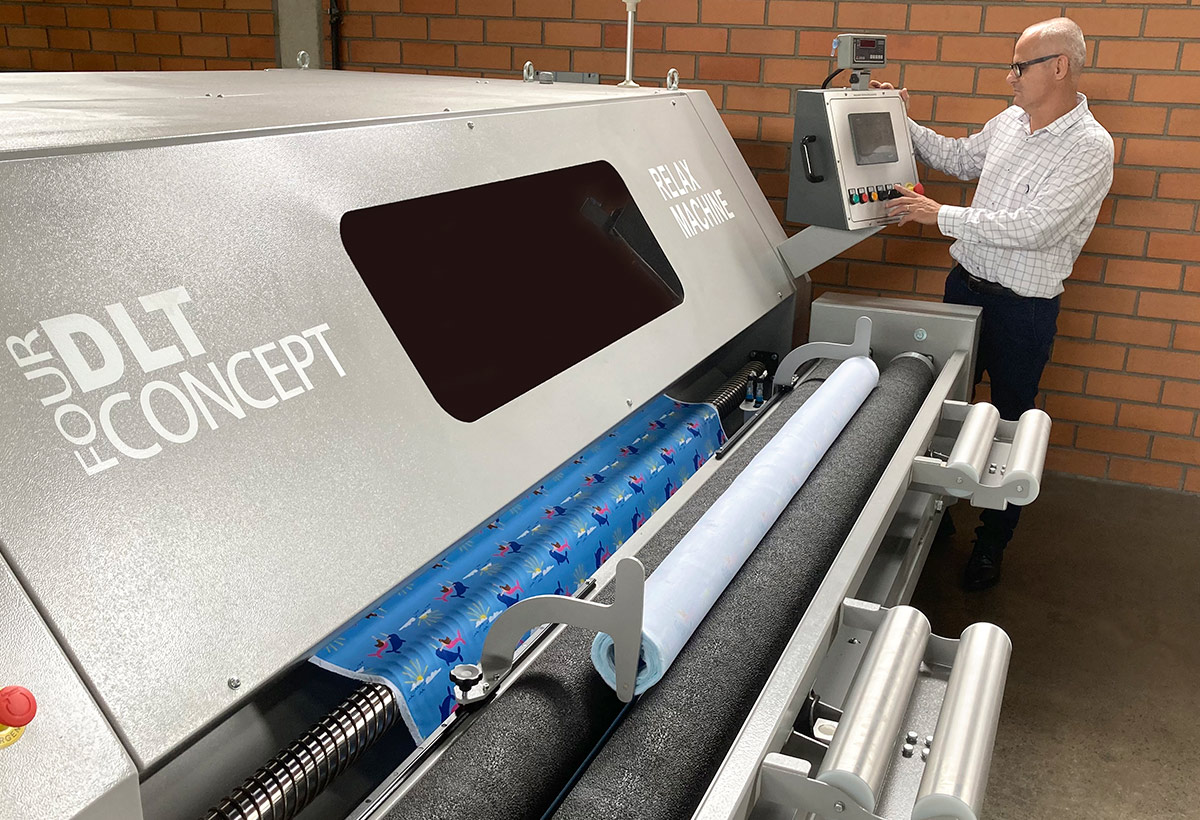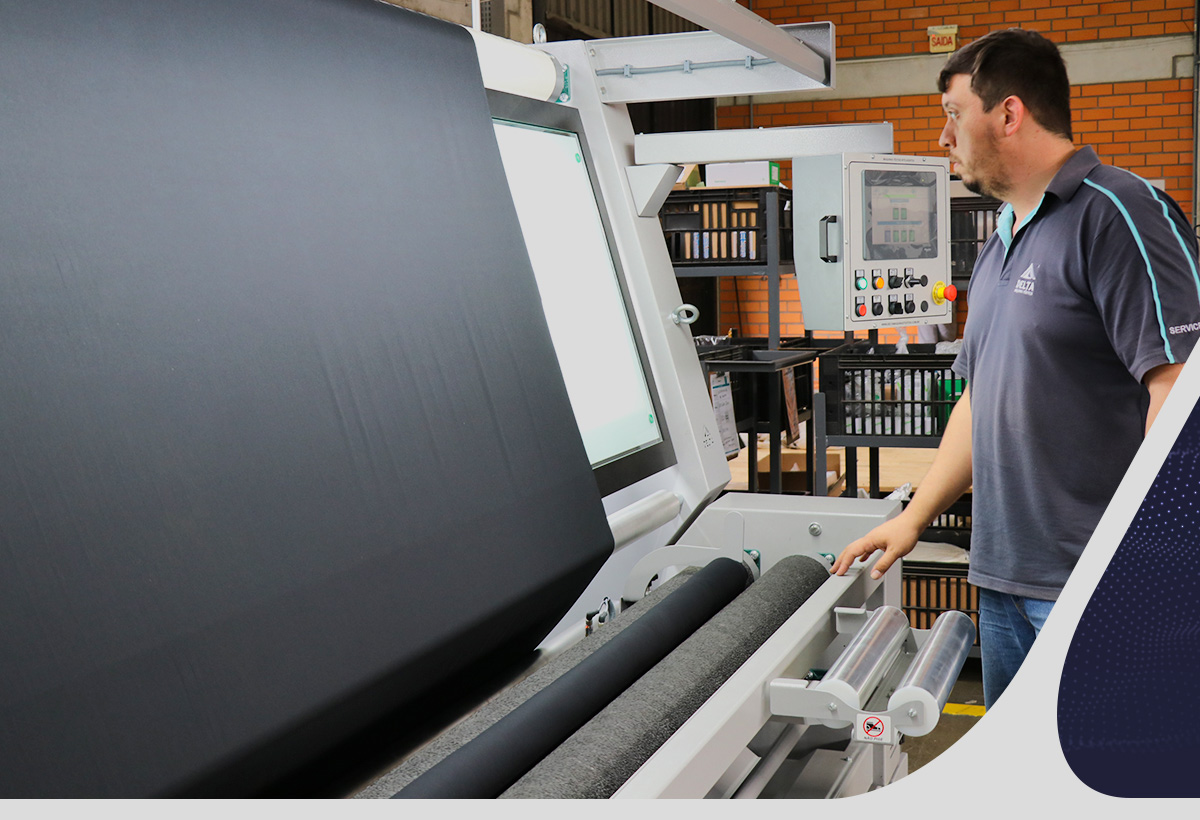Production management needs to be carried out efficiently, especially in the textile industry. After all, here, an error can cause the loss of material that will need to be sold at a lower value or discarded.
Although many organizations believe that their processes are efficient, in most cases, they could still be optimized. Especially when using technology to quality control, process automation and data management.
With this in mind, in this text we have gathered tips on how to optimize the stages of the textile production process. Continue reading to find out!
Why optimize production management in the textile industry?

Optimizing production management in the textile industry is a strategic practice! After all, she is responsible for planning, organization and control of processes.
In this way, it has a direct impact on productivity, cost reduction, quality of final products and better use of resources.
Therefore, it is her role to ensure constant improvement and improvement of results. Therefore, the investment and application of modern practices technologies and intelligent equipment must be researched and analyzed,
And innovation, encouraged by Industry 4.0, provides competitive advantages to the factory, ensuring market evolution.
It is worth remembering that this concept refers to the use of technological tools and solutions for the automation of production processes. In this context, digitalization is essential for standardization of the entire textile chain.
In other words, digital systems are used to generate interconnection between machines. The objective is to make production more intelligent and efficient thanks to the generation of real data.
Therefore, here, tools such as cloud computing, 3D printing, Big Data, Augmented Reality, Artificial Intelligence (AI), contribute to production efficiency.
In fact, according to data presented by the Industry Portal, the Industry 4.0 market could reach US$5.62 billion in Brazil by 2028! This number only reinforces the competitive impact of the concept on national industries.
In summary, optimizing production management generates benefits such as:
- Quick identification of scenarios andproblems;
- Correction of errors quickly and efficiently;
- Reduction of costs and waste of material and resources;
- Greater product quality and opportunities.
Therefore, we have separated information about the functioning of the clothing production stages corresponding to truly efficient management. See below examples and tips for inspiration!
1. Receiving
The first step in the production process is receiving rolls from suppliers. Here, as soon as they arrive, production management you need to make sure they pass an inspection.
The objective is to ensure that what was established during the purchase, and in the technical sheet, is correct. It is necessary to evaluate characteristics such as tone, weight, shrinkage, weight and width.
After verification, if the fabric is approved, it goes to the next step. When something is not as agreed, it goes back to the supplier. This way, losses are avoided and quality is assured.
Read also: Textile samples: how to optimize the washing process in industry?
2. Quality control
This step is a complement to the previous one. Here, efficient production management encourages wider inspection to control quality.
In other words, possible defects, compromise of useful area, qualification and quantification are checked. As well as a physical analysis of quality standards in each of the rolls.
One way to evaluate them is by reviewing fabrics with Delta Máquinas Têxteis Reviewers. This is a practice that was not applied in the textile industry. That is, the materials passed to the next phases of the production process without checking their quality and finishing.
The lack of this review generated problems during spreading due to dimensional errors, contributing to waste and increased expenses. Which, of course, also caused quality problems in the final product.
In certain traditional processes, this step is only done when infesting. However, initial inspection is essential to obtain accurate information regarding shrinkage and twisting, for example.
Again, in case of failure, the fabric can be returned to the supplier for non-compliance.
Once approved, if they need relaxation they are forwarded to the process. And when they don’t, they can go straight to storage.
Using this process it is also possible to quantify the defects and analyze what the impacts will be in the next steps.
Read also: Textile product quality problems: how to solve them?
3. Relaxation and Spreading
Mesh resting, also known as relaxing, is a familiar process for production management.
In this phase, the fabrics are stretched on surfaces for 24 to 48 hours to check the width and length. However, traditionally it is done manually.
However, with the help of technology and efficient equipment, it is possible to guarantee even more productivity at this stage. The Mesh and Fabric Relaxer, for example, thanks to automation, ensures that the process occurs at a speed of 30 meters per minute.
Furthermore, with it, it will be possible to monitor and generate important information for the infestation. This innovation eliminates conventional resting and promotes immediate relaxation from roll to roll.
All of this is based on a series of real data on the width, footage, grammage and roll yield that can be integrated into the ERP.
The spreading is the stage related to preparation for cutting. During the process, the fabric is placed in flat, aligned layers to facilitate cutting. For it to be done properly, there needs to be a standardizationin the process.
Therefore, the use of the Relaxer and intelligent automation equipment They are essential for reducing failures and optimizing management. Thus, large-scale production will gain greater agility, reliability and profitability.
4. Cut
This is the final stage and, like the others, it needs care. However, when you already have an inspected raw material in your hands, with stabilized dimensions and assured fabric quality, It is much simpler to obtain parts without flaws and defects.
Furthermore, problems such as the generation of second quality parts arepractically eliminated. After all, efficient quality control does not allow defective fabrics and knitwear to pass through.
It’s that simple! The use of intelligent solutions, which follow the Industry 4.0 concept, contribute to the optimization of management. The machines and equipment mentioned are an example of strategic investment to eliminate possible errors, waste, costs and lack of productivity.
What’s next?
Is your production management optimized or do you still need to implement changes? If you still need an update, be aware that it is important to take action as soon as possible.
Such adaptations are essential for your clothing to adapt to Industry 4.0, ensuring the industry’s competitiveness.
But in addition to investing in and applying innovative solutions, it is management’s role to eliminate bottlenecks in any production process.
To find out about the most common ones and find out how to solve them, click the button below and download our free infographic.



